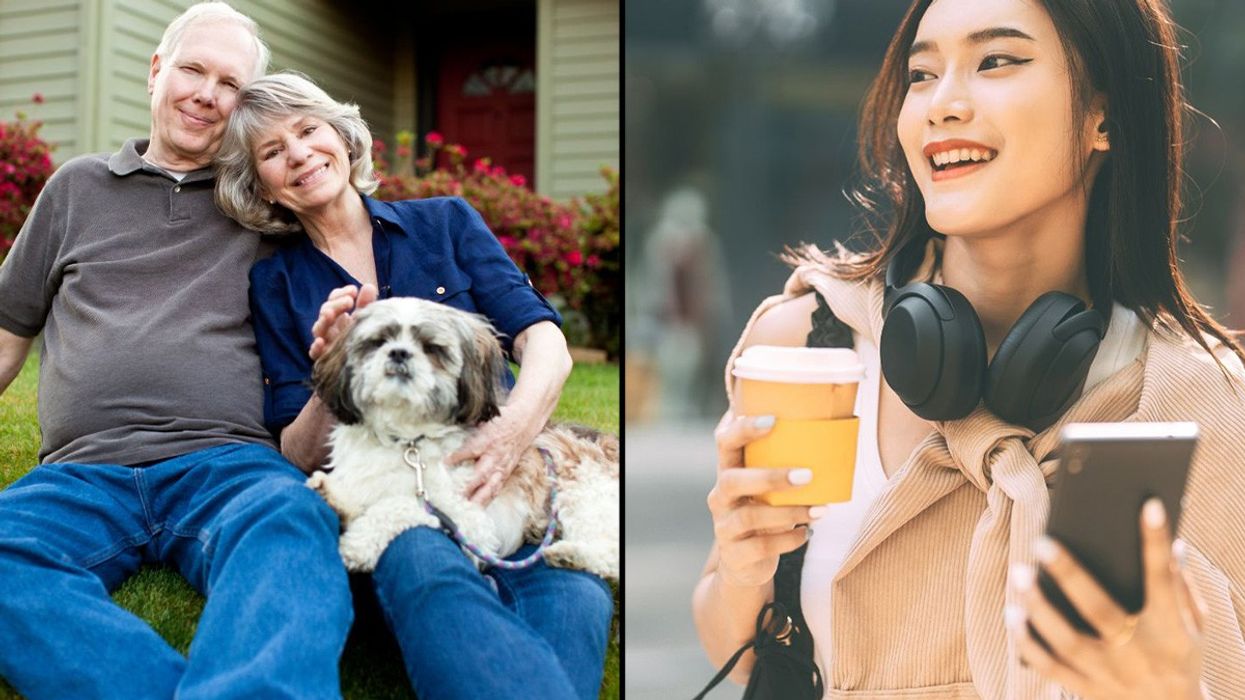TikTok has become a powerful platform for young people, allowing them to share their experiences, support mental health, and grow their businesses. When Jennifer Le (@jennif3rle) faced family financial struggles, she turned to TikTok for help. Her heartfelt video resonated with millions, who rallied to support her family.

A grad student in Southern California, Jennifer posted this seven-second clip in January 2023. In the clip, the camera pans around the restaurant’s interiors showing empty tables as her father stands at the counter, his hands folded atop the countertop, while he’s staring in the distance. "It makes me so sad to see my parents just wait for customers to walk through their door to eat at the Vietnamese restaurant," Jennifer wrote in the video’s overlay text. Jennifer’s parents own a restaurant called “Lee’s Noodle House,” where her mom, Ha Tran, cooks most of the meals while her father, Vuong Le, takes care of the groceries and catering.

Lee’s Noodle House opened in 2003. The restaurant was up and running for several years until the ferocious 2020 pandemic struck the world. The pandemic, Vuong Le told The Press Democrat, affected nearly everything, closing down shutters in Sonoma County, and restaurants were particularly crippled. “Before the pandemic, it was really, really busy,” Jennifer said. “Back in 2018, 2019, but right now when COVID hit, it was dead silent.”

When even after the pandemic had passed and the restaurant remained empty, Jennifer took the matter into her own hands and pleaded to TikTokers to spread the word. “TikTok, do your thing and help support my parents’ Vietnamese restaurant. My parents haven’t had that many customers and have been feeling stressed dealing with financial issues. If you want to check it out, they make delicious Vietnamese food. 1010 Hopper Avenue, Santa Rosa, CA 95403,” she wrote in the video caption.

Describing what prompted her to post this TikTok, she told Good Morning America, "At that moment, I just kind of recorded the video to reach out to people and see if I could make a change," and added, "And for people to know about the restaurant so if they're ever in the area, they know to come check it out."

The video quickly became widespread garnering more than 900,000 views in less than a day. Currently, it has over 1.7 million views and more than 4,000 shares. “My coworkers and I used to go there for lunch twice a week we love this place and now my kids love to go there,” commented @kitty_kat2600. @_suuumiii_ added, “My family has been going there since before I can remember. We always love the food and I remember all the huge family meals we would have there.” Those who lived far away commented on “algorithm boost.” People were flocking from everywhere with suggestions like “Keep making more videos,” “Show off the food,” and “Use more hashtags,” to support her family business.

The post not only started attracting more customers to the restaurant, but tons of people displayed enormous gestures of support towards them. When Erika Altes (@whiskeyandlace) saw Jennifer's TikTok, she urged her over 100,000 Instagram followers to support the restaurant, according to CBS News. Another Instagrammer, @sonomacoguide, saw Erika’s post and headed to the restaurant and reviewed some of its meals like shrimp egg rolls, chowmein, pho, and vermicelli. @ladyironchef recommended the restaurant’s beef brisket noodles and fish balls to her followers. The situation was slowly changing.
"I was just in shock because it just kept consistently going up. I posted it when I woke up and then I left it alone, and when I checked back three days later, it was blowing up,” Jennifer recalled, speaking to Good Morning America. The support was so outpouring that orders rushed in fast and they had to post a notice asking customers to wait. Jennifer said, "My parents are really grateful for all the support." She even traveled back to Santa Rosa for two weeks to assist her parents.
Since many people suggested she post more “food” videos, Jennifer has been posting shots and clips of the meals from the restaurant. She even uploaded a follow-up video in which she shared her recommended dishes from Lee’s Noodle House, including the Bánh Mì pork sandwich, which she said, is her personal favorite, and that costs just $6.95. "The power of social media is, like, insane," she told CBS News.
@jennif3rle tiktok do your thing & help support my parents Vietnamese restaurant:( my parents haven’t been having that many customers & been feeling stressed dealing with financial issues. if you want to check it out, they make delicious vietnamese food:) 1010 Hopper Avenue, Santa Rosa, CA 95403 #fyp #vietnamesefood #restaurant
Follow Jennifer Le on TikTok and her family restaurant Lee's Noodle House on Instagram.




















 Ladder leads out of darkness.Photo credit
Ladder leads out of darkness.Photo credit  Woman's reflection in shadow.Photo credit
Woman's reflection in shadow.Photo credit  Young woman frazzled.Photo credit
Young woman frazzled.Photo credit 



Will your current friends still be with you after seven years?
Professor shares how many years a friendship must last before it'll become lifelong
Think of your best friend. How long have you known them? Growing up, children make friends and say they’ll be best friends forever. That’s where “BFF” came from, for crying out loud. But is the concept of the lifelong friend real? If so, how many years of friendship will have to bloom before a friendship goes the distance? Well, a Dutch study may have the answer to that last question.
Sociologist Gerald Mollenhorst and his team in the Netherlands did extensive research on friendships and made some interesting findings in his surveys and studies. Mollenhorst found that over half of your friendships will “shed” within seven years. However, the relationships that go past the seven-year mark tend to last. This led to the prevailing theory that most friendships lasting more than seven years would endure throughout a person’s lifetime.
In Mollenhorst’s findings, lifelong friendships seem to come down to one thing: reciprocal effort. The primary reason so many friendships form and fade within seven-year cycles has much to do with a person’s ages and life stages. A lot of people lose touch with elementary and high school friends because so many leave home to attend college. Work friends change when someone gets promoted or finds a better job in a different state. Some friends get married and have children, reducing one-on-one time together, and thus a friendship fades. It’s easy to lose friends, but naturally harder to keep them when you’re no longer in proximity.
Some people on Reddit even wonder if lifelong friendships are actually real or just a romanticized thought nowadays. However, older commenters showed that lifelong friendship is still possible:
“I met my friend on the first day of kindergarten. Maybe not the very first day, but within the first week. We were texting each other stupid memes just yesterday. This year we’ll both celebrate our 58th birthdays.”
“My oldest friend and I met when she was just 5 and I was 9. Next-door neighbors. We're now both over 60 and still talk weekly and visit at least twice a year.”
“I’m 55. I’ve just spent a weekend with friends I met 24 and 32 years ago respectively. I’m also still in touch with my penpal in the States. I was 15 when we started writing to each other.”
“My friends (3 of them) go back to my college days in my 20’s that I still talk to a minimum of once a week. I'm in my early 60s now.”
“We ebb and flow. Sometimes many years will pass as we go through different things and phases. Nobody gets buttsore if we aren’t in touch all the time. In our 50s we don’t try and argue or be petty like we did before. But I love them. I don’t need a weekly lunch to know that. I could make a call right now if I needed something. Same with them.”
Maintaining a friendship for life is never guaranteed, but there are ways, psychotherapists say, that can make a friendship last. It’s not easy, but for a friendship to last, both participants need to make room for patience and place greater weight on their similarities than on the differences that may develop over time. Along with that, it’s helpful to be tolerant of large distances and gaps of time between visits, too. It’s not easy, and it requires both people involved to be equally invested to keep the friendship alive and from becoming stagnant.
As tough as it sounds, it is still possible. You may be a fortunate person who can name several friends you’ve kept for over seven years or over seventy years. But if you’re not, every new friendship you make has the same chance and potential of being lifelong.